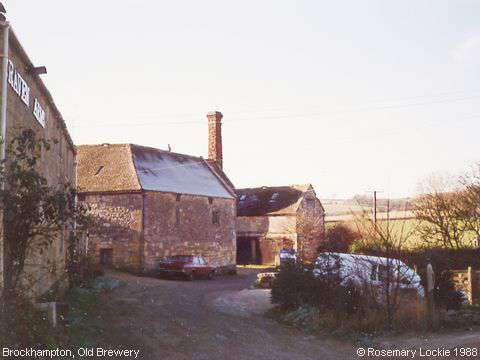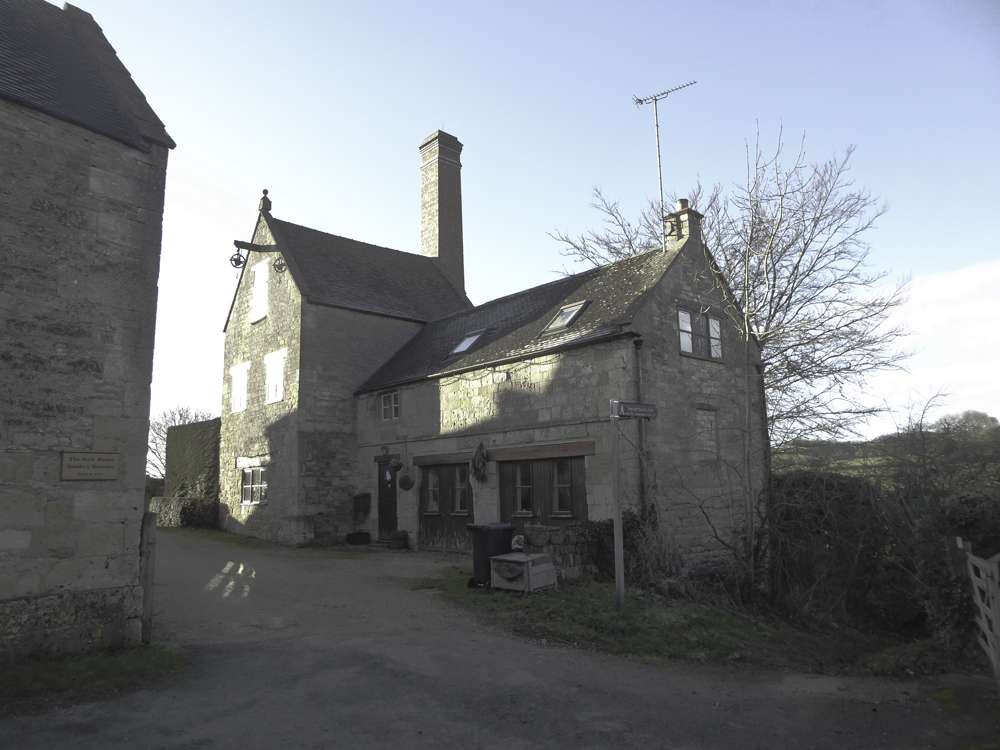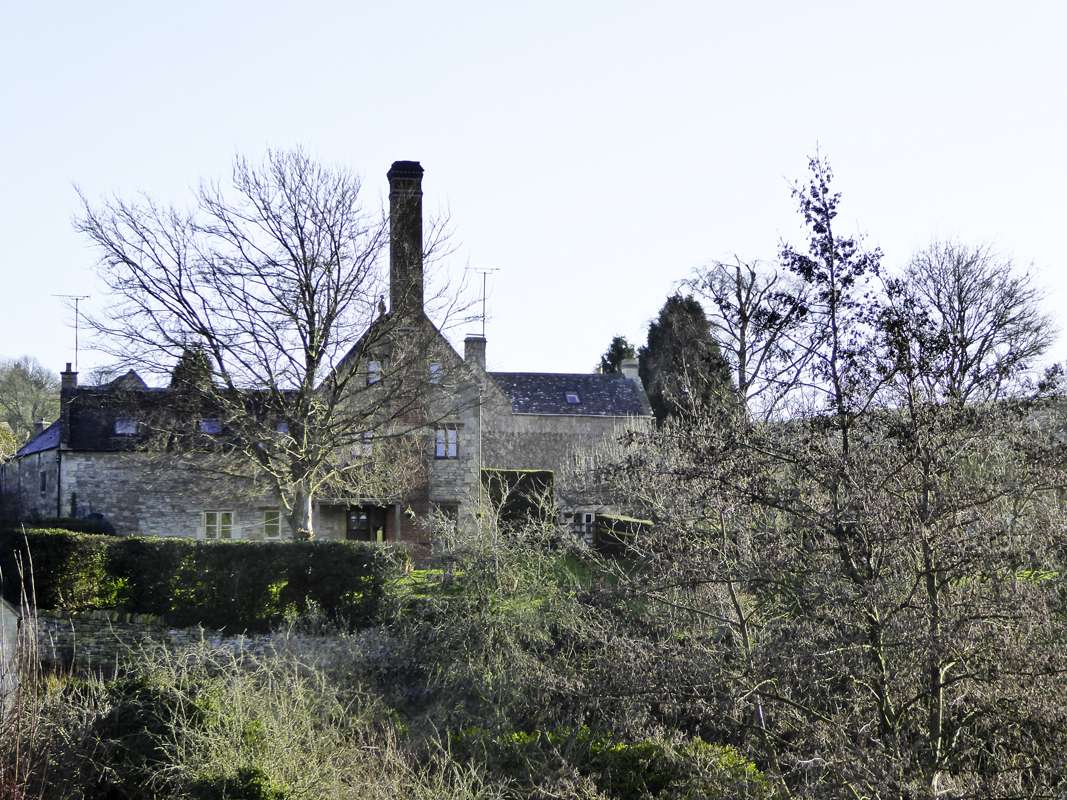
Brockhampton’s Brewery
A local landmark, a tall brick chimney visible from afar, stands out among the Cotswold stone buildings of Brockhampton. It and its associated buildings, comprising a large malt house, brewery building and brewery cottage, are what are left of a once thriving brewery in the village belonging to the Combes family. The buildings are Grade II Listed (see History>What is a Listed Building?). A plaque on the malt house wall confirms its date of construction as 1792; it is no longer used, while the other brewery buildings are now residential. The following is a memoir of the malt house operation written by Gill Lanfear (née Combes), now in her late 80s, who still resides in the village. Many thanks for her contribution:
“The Malt House belonging to Combes’ Brewery was a very important part of the local brewing industry. Beer was (and still is) made from malt, barley, hops, sugar and yeast. The barley was mostly grown by local farmers and delivered to the Malt House by horse and cart. The hops, from Herefordshire, were delivered by train to Andoversford station in long sacks. The sacks were called ‘pockets’. The yeast came in small packets but I’m not sure where the sugar came from.
The Malt House is a building with three stories with a concrete floor top and bottom. There was (and still is) a deep well at the side of the Malt House, from here water was pumped into a large concrete trough, which had been filled with barley – this was on the bottom floor. It was left soaking for days until it had sprouted. The water was then drained out and the barley was shovelled out of the trough through two large, purpose-built holes onto the bottom floor of the malt house and spread evenly. It had to be turned daily with wooden spades.
The barley was then shovelled into large baskets, which were hauled up onto the top floor by someone winding a handle. It was then removed from the baskets and spread again, all over the top floor this time. After a few days, this was shovelled into the kiln, which was over a big coke fire. The fire had to be made up several times a day.


The next day, it was shovelled out of the kiln onto the middle floor; it was now dry malt ready for brewing and taken across the entrance to the brewery building, where it was heated again, in a large copper with a fire below, hence the tall brewery chimney.
Combes’ Brewery was sold in 1928 and closed. The family went on making packets of Combes malt and hops until sugar rationing in the second World War and the Ministry of Defence took over. There was no mains water or electric in the village until the 1930s and, by then, the brewery was sold.”
Gill Lanfear (née Combes)
______________________
